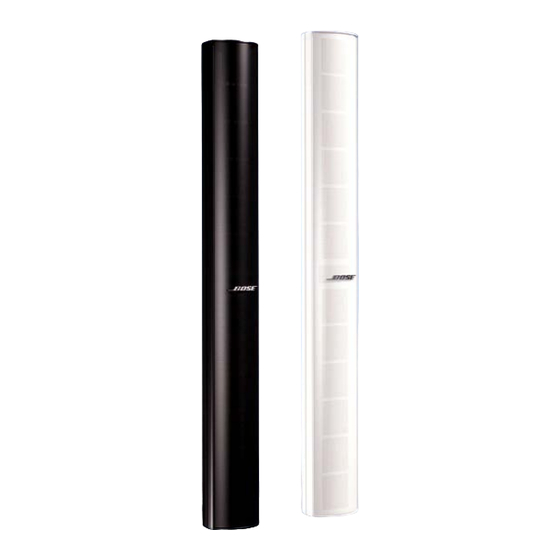Bose Panaray MA12 Fundamentação técnica e debate - Página 7
Procurar online ou descarregar pdf Fundamentação técnica e debate para Altifalantes Bose Panaray MA12. Bose Panaray MA12 36 páginas. Modular line array loudspeaker
Também para Bose Panaray MA12: Manual do utilizador (2 páginas), Manual de instalação (16 páginas), Manual de instalação (8 páginas), Manual de instalação (7 páginas), Manual de serviço (11 páginas)

Figure 2a. A traditional speaker producing spherical waves and
mounted at ear height in the front of the room results in a 26dB
difference in direct field level when the distance ratio of near to far is
1:20. A listener in the back would report the loudness to be four or
more times softer than the front.
Thus while localization is good because the speaker is placed close to the visual activity,
the system does poorly in creating the desired sound level in the audience area. No matter
what volume setting is used, the sound is either too loud or too soft in most of the audience
area – it is simply impossible to establish the correct level for the audience with such a big
difference from front to back.
To achieve less variation in speaker-to-listener distances, and therefore less variation in
sound level, the speaker can be hung in the air and tilted down at the audience as shown in
Figure 2b. This is what is referred to unofficially as the 'hang-and-tilt' approach. The ratio in
this example is 2:1, corresponding to a sound level variation of only 6 dB. The hang-and-tilt
approach largely solves the level variation problem, which is why it was vigorously pursued
as a way to satisfy customer requirements.
Figure 2b. When the same speaker is mounted in the air and tilted
down, the level variation is reduced significantly – in this case to only 6
dB – which corresponds to a near-to-far distance ratio of 1:2.
®
Bose
MA12™ Modular Array: Technical Foundation & Discussion
April 2002, © Bose Corporation, All Rights Reserved
Page 7 of 36
